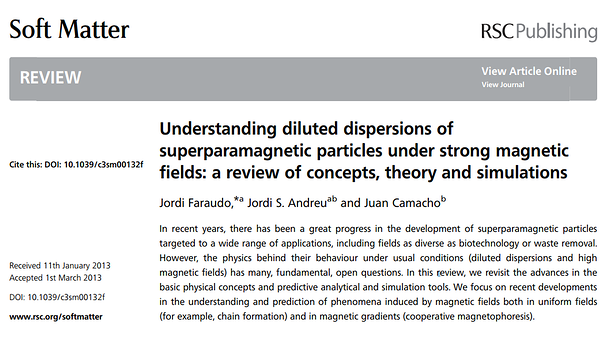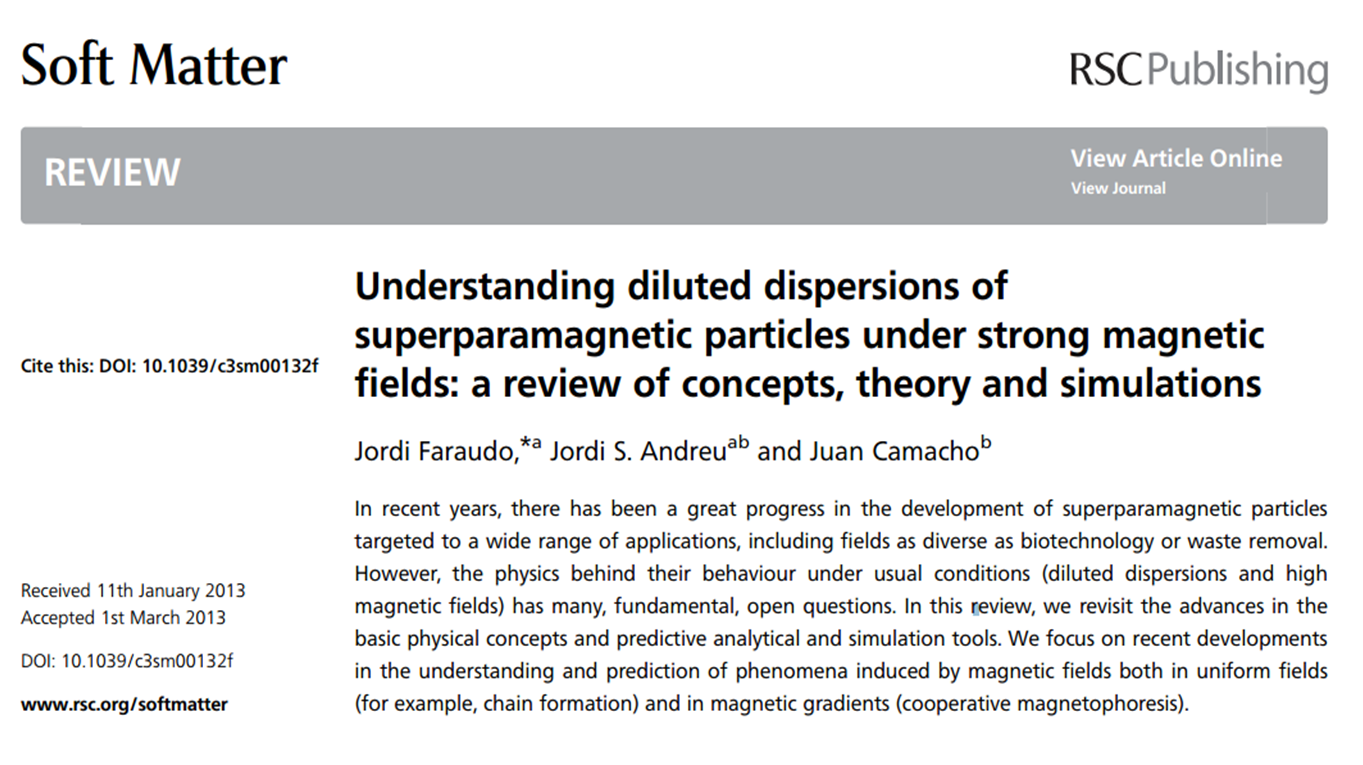Learning more about the behavior of magnetic beads separation when strong magnetic fields are applied
For engineers and researchers using Biomagnetic Separation, it is quite frustrating to discover that theoretical concepts and methods are progressing too slowly in comparison with application needs. The bibliography and theoretical tools that are necessary for designing and interpreting experiments are scarce and difficult to find, especially considering that they are published in journals from various scientific disciplines.
A recently published Open-Access review tries to fill this gap, thereby summarizing the physics behind the most common working conditions in the real world: diluted dispersions and high magnetic fields.
“Understanding diluted dispersions of superparamagnetic particles under strong magnetic fields: a review of concepts, theory and simulations"
We had the opportunity to participate in discussions on part of this work with Dr. Jordi Faraudo, Dr. Jordi Andreu, and Dr. Juan Camacho, from the Institut de Ciència de Materials de Barcelona (ICMAB-CSIC) and the Universitat Autònoma de Barcelona. These “theoretically” academic discussions proved to be very useful for focusing improvements on the conditions of Biomagnetic Separation, where theoretical tools have helped to interpret experimental results and modify key parameters of the analyzed process.
The paper “Understanding diluted dispersions of superparamagnetic particles under strong magnetic fields: a review of concepts, theory and simulations" begins with a discussion of the interactions between dispersed superparamagnetic particles under a magnetic field, thereby analyzing both dipole-dipole interaction as well as colloidal stability and the formation of a secondary minimum.
The authors then review the formulas for predicting chain formation under uniform fields, which is the basic phenomenon required for the quick separation time needed in industrial applications. Finally, they analyze the movement of dispersed magnetic beads in an inhomogeneous field, “cooperative magnetophoresis”, the process at the forefront of Biomagnetic Separation in Life Science applications
Download the paper and other resources
The text includes several useful formulas for estimating the conditions under which magnetic beads/particles could form chains and then separate quickly enough. The description of the effect by the concentration of separation time is also very interesting. For readers who would like to skip the details on physics, some of these formulas can be found on the eBooks published by Sepmag.
For those who are interested in the details, in how the formulas are derived and in extensive comparisons using experimental data, the review paper has been made available on "open access" under a Creative Commons license using CSIC funds. It can be accessed for free (no registration required) at the following link.
This article is highly recommendable for gaining a more in-depth understanding of magnetic beads separation experiments.


Lluis M. Martinez, Ph.D.
CSO, Sepmag


